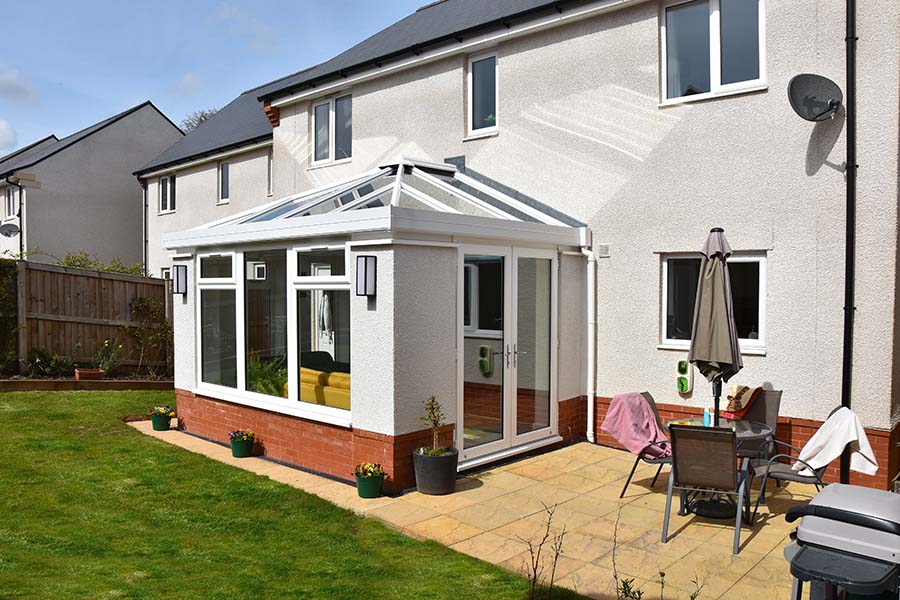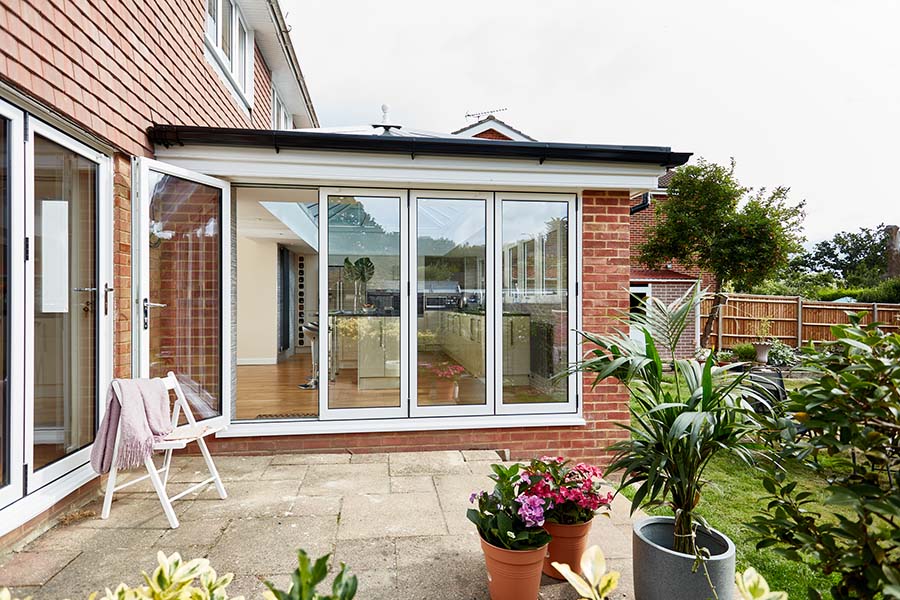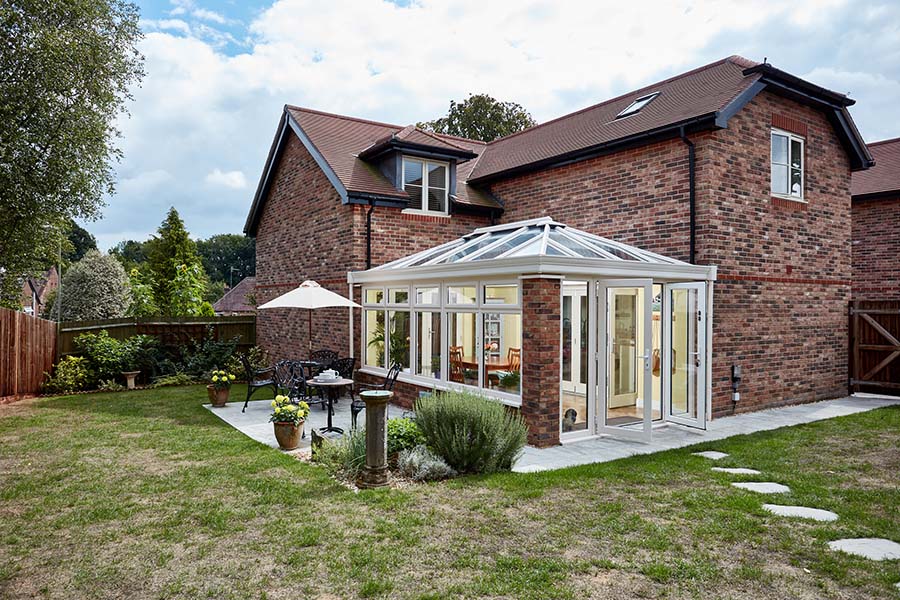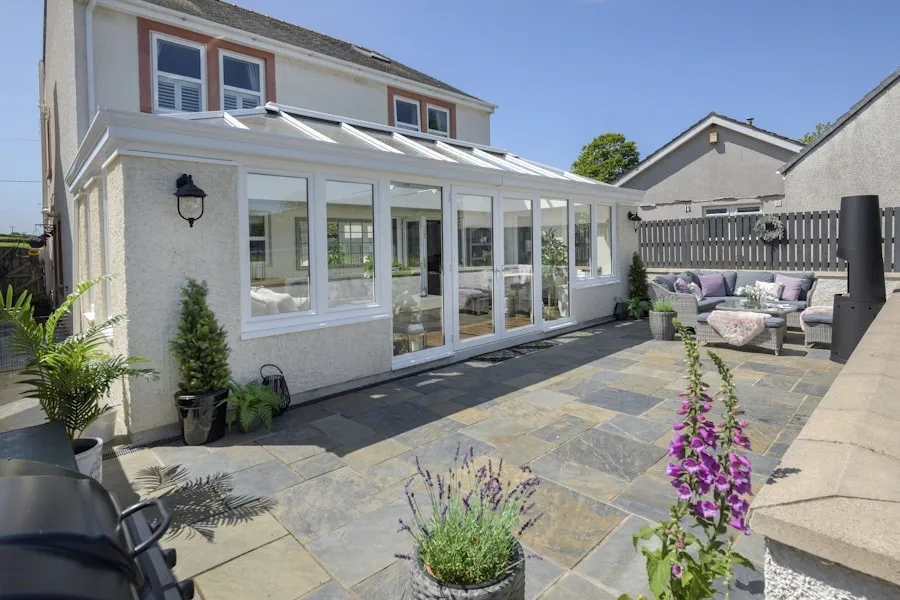What is an Orangery?
In the past, orangeries were glazed structures used to grow plants. Today, orangeries are similar to conservatories but feature more brickwork and often a glazed roof lantern. Modern orangeries tend to be used to create large, bright open-plan spaces like a bigger living room or a spacious kitchen-diner.
Reasons to Choose an Orangery
-
Year-Round Use
Because it is solid-built and well insulated, an orangery can be used throughout the year. The energy-efficient glazing also means that it remains comfortable in both cold winters and hot summers.
-
Thermal Efficiency
Insulation, brick walls and energy efficient windows mean orangeries are more thermally efficient than conservatories. The roof lantern glazing options also help keep the room warmer in winter and cooler in summer.
-
Home Value
Adding a large, bright and functional room like a modern orangery can help increase home value. Choose to add a new living room or create a huge, showstopping open plan living space.
-
Natural Light
An orangery makes it easy to enjoy natural light throughout the year. The angled roof lantern pulls light from a wider angle than flat roofs. Orangeries often have large windows too, giving you even more light.
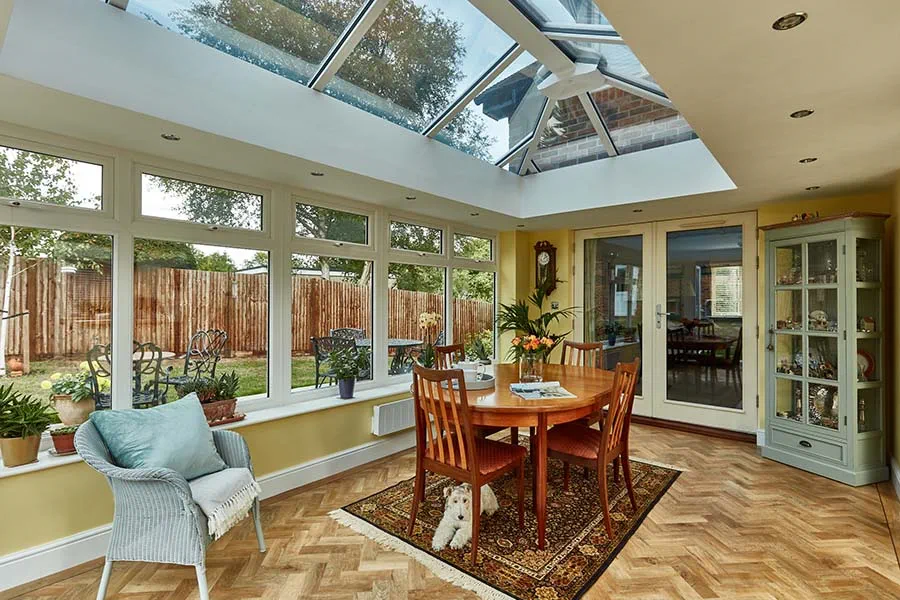
Choosing the Perfect Orangery
Planning Permission for Orangeries
You probably won’t need planning permission for an orangery, but it’s always important to check the rules of your local authority. Orangeries are a single-storey extension, which means they are a “permitted development”. There are circumstances where you’d need to seek planning permission, such as if the orangery is within two meters of your boundary or has a footprint larger than 50% of your home. Getting an Orangery through us means that we take care of any planning applications, so you don’t need to worry.
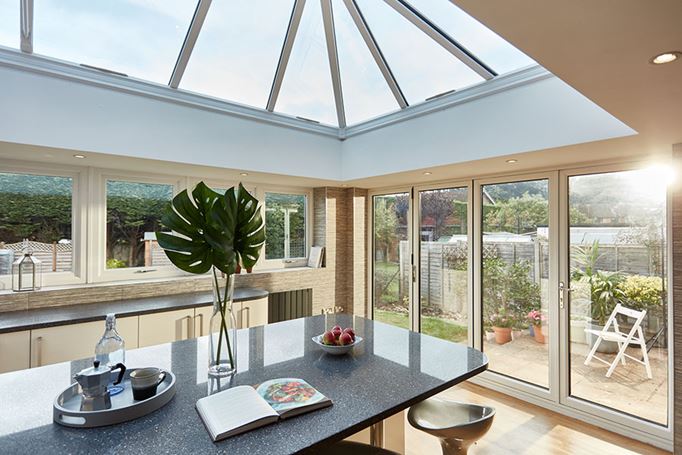
Customer Reviews
Choose Anglian for a National Company Local to you
10-year Guarantee
A 10-year parts and labour guarantee is included in your Anglian double glazing price.
Made in Britain
Our products are made from start to finish in a British factory by skilled craftspeople.
UK's Number 1
Anglian stands proudly as the UK's Number 1 home improvement provider.
Orangery Window Glazing Options

Live Chat Now
Live chat with our friendly British based experts, or book an appointment, 24hrs a day.
Learn More about Orangeries
Orangeries FAQs
Your questions on Orangeries answered by us
An orangery is more like an extension than a conservatory as it features solid brick pillars and columns combined with large windows. An orangery can offer more privacy than a conservatory, as well as be more usable throughout the year, thanks to greater thermal efficiency. This can make it feel more like an extra room rather than a conservatory, useful as a dining room or living room. Find out more about the differences between a conservatory and an orangery in our guide.
We design every orangery individually to suit the exact specifications of your home. That means a unique shape and size depending on your space and preference – with a wide range of features like windows, doors, and roof styles to choose from. You could go for a grand rectangular space if you have the room, or create something more intimate and cosy.
Orangeries provide valuable additional living space that can be used for anything from a dining room to a living room or an open-plan kitchen. They provide that indoor-outdoors feeling, connecting your home to your garden or outdoor space, but feel more like an extension of the house rather than a separate conservatory.
The cost of building an orangery will depend on many factors, such as its size, shape, number of windows, and other design features. With Anglian, we’ll provide a no-obligation quote based on your home and the type of orangery you want to build. Just get in touch and we can give you an accurate cost for your new orangery.
Yes, a well-designed and professionally installed orangery can add value to your home. It’s a desirable feature that will attract potential buyers, adding more space to a home as well as enhancing the overall look of a property.
A solidly built and well-maintained orangery can last for many decades. The lifespan will depend on the materials used, specifically the kind of glazing and window frames. uPVC and aluminium will last longer than wooden windows and doors, for example.
The cost of an orangery vs a full extension will depend on lots of specifics like size, shape, and materials, but in general, an orangery is typically cheaper to build. An orangery uses fewer bricks and requires less overall structure than a full extension and can be easier to incorporate onto the existing property, lowering the cost.
Explore Similar Products



Home Improvement Provider


